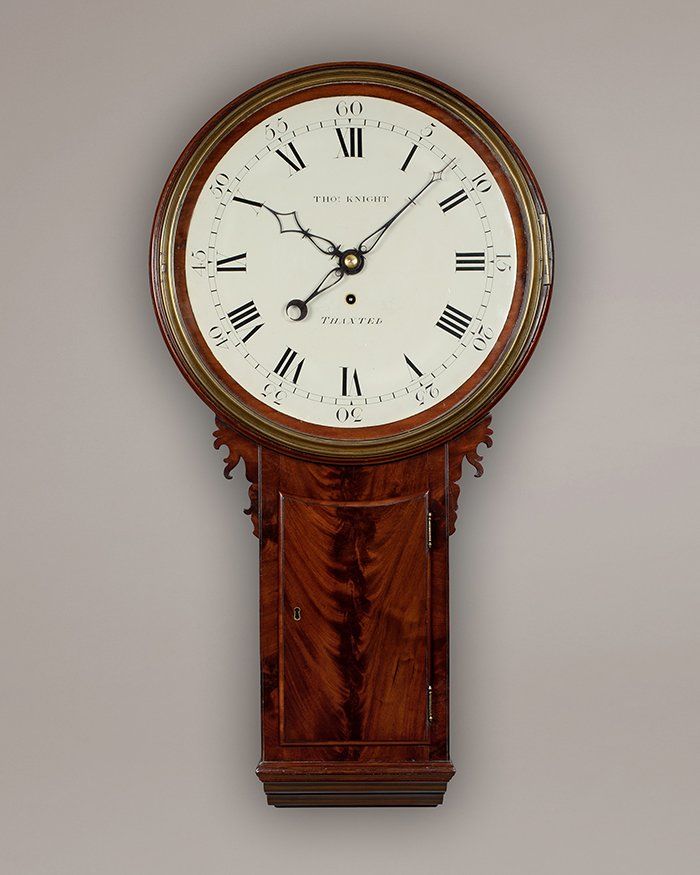Towards the end of the 18th century chinoiserie decoration gave way to mahogany. This very fine tavern clock by Swiss born Louis Recordon was made c.1795. The dial is signed "Recordon, Late Emerys", as Recordon took over the Emery business in 1780. Recordon has something of an infamous reputation as it is possible that he stole the invention of watch autowinding from his Swiss employer prior to moving to London where he filed for a patent. Notwithstanding, he made a watch for King George III. See chapter 2 of the "Tavernicus Tavern Clock Archive" for a full history and description of this clock, pages 234-250.

A late mahogany tavern clock of a very appealing size, 41 inches high. Thomas Knight's working dates were c.1770-1812, thus spanning the last quarter of the 18th century, the peak period for tavern clocks, through to the beginning of the Regency Period when mahogany had become very fashionable. This clock is in the form of an 18th century tavern clock with the most beautifully cut ears which is unusual on a mahogany case. The late elements are the metal enamelled dial, the heavy brass bezel and the longcase style blued hands. This east anglian clock dates to after 1800.
The movement is A-plated with a five wheel train winding counter-clockwise and runs for 8 days in this short trunk. The run time is assisted by a weight which has the pulley mounted within. Image courtesy of Howard Walwyn.